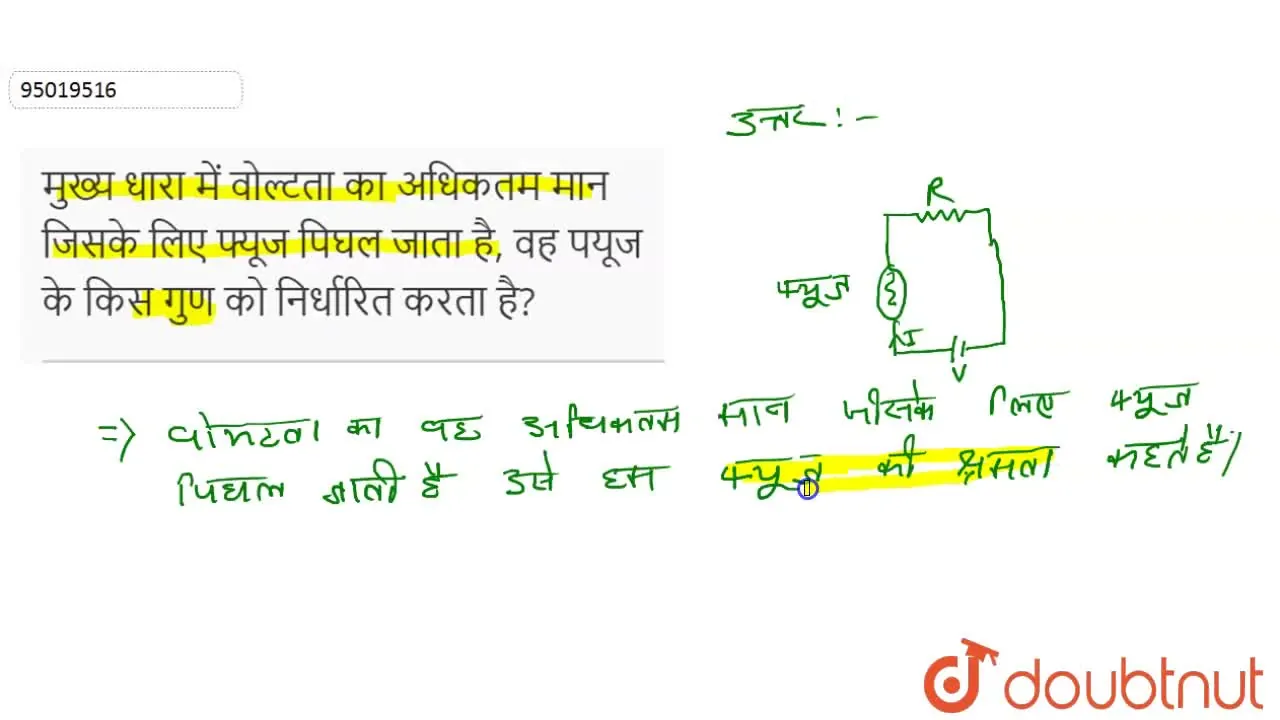Prove that the current at which a fuse will melt is independent of the length of its wire.
Video Solution
Text Solution
Let there be one fuse wire of radius r and length l. The resistivity of material of wire is ρ. Now, the resistance of wire can be written as follows:
R=ρlπr2
Let I be the amount of current flowing through this wire. The rate at which heat will be generated can be written as follows:
H=I2R⇒H=I2ρlπr2 ...(i)
When a steady state temperature is attained, the rate of joules becomes equal to the rate of radiation. Let e be the emissivity of the material of the wire and T the absolute temperature. Then, according to Stefan.s law of radiation. Rate of radiation =eσAT4. Here, A is the surface area of the body. Surface area of fuse wire is A=2πrl. Hence, the rate of radiation can be written as follows:
Rate of radiation =2eσπrlT4...(ii)
In case of the fuse wire, a steady state temperature is usually very high in comparison to its surrounding. So we can neglect the rate of heat absorption from the nearby objects. Hence, for a steady state we can equate the rate of radiation to rate of joules heating.
I2ρlπr2=2eσπrlT4⇒T4=I2ρ2eσπ2r3
We can see that the relation of temperature with the amount of current flowing through it is independent of the length of fuse wire. Note that when for a certain value of I, temperature T reaches the melting point, the fuse will blow.
|
Updated on:21/07/2023
Related Playlists
- BOOK - MODERN PUBLICATIONCHAPTER - CURRENT ELECTRICITYEXERCISE - REVISION EXERCISES (VERY SHORT ANSWER QUESTIONS)46videos
CURRENT ELECTRICITY
- BOOK - MODERN PUBLICATIONCHAPTER - CURRENT ELECTRICITYEXERCISE - REVISION EXERCISES (ADDITIONAL QUESTIONS)11videos
CURRENT ELECTRICITY
- BOOK - MODERN PUBLICATIONCHAPTER - CURRENT ELECTRICITYEXERCISE - NCERT SOLVED (NCERT Exemplar Problems Subjective Questions)(Short Answers Type Questions)6videos
CURRENT ELECTRICITY
- BOOK - MODERN PUBLICATIONCHAPTER - ATOMS EXERCISE - Chapter Practice Test16videos
ATOMS
- BOOK - MODERN PUBLICATIONCHAPTER - DUAL NATURE OF RADIATION AND MATTER EXERCISE - CHAPTER PRACTICE TEST15videos
DUAL NATURE OF RADIATION AND MATTER
Similar Questions
A fuse wire be
View SolutionWhat is a fuse wire ?
View SolutionExplain that magniture of current which can melt a fuse wire is independent of its length.
View SolutionA fuse wire is always connected to the
View SolutionThe fuse wire is made of:
View SolutionProve that the force acting on a current carrying wire, joining two fixed points a and b in a uniform magnetic field, is independent of the shap of the wire.
View SolutionA fuse wire is made of
View SolutionState the characteristics of fuse wire.
View SolutionMelting point of a fuse wire is
View SolutionElongation of a wire under its own weight is independent of
View Solution


